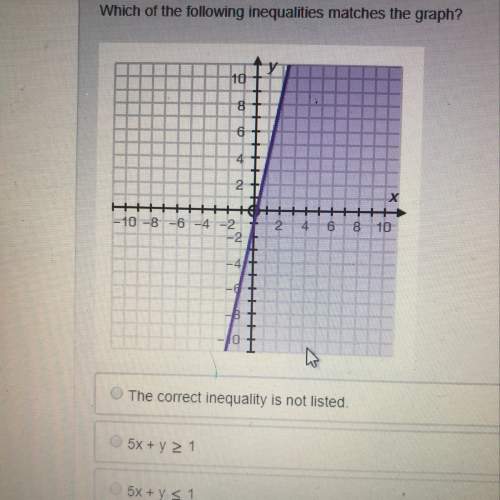
Mathematics, 26.06.2020 15:01 kelly3215
Quadrilateral ABCD is translated to get quadrilateral A′B′C′D′. Vertex A is at (-5, 2), and vertex A′ is at (2, -2). Quadrilateral ABCD is translated . If vertex B is at (-6, 5), then vertex B′ is at .

Answers: 3


Other questions on the subject: Mathematics


Mathematics, 21.06.2019 17:20, garciavergaraana
Which of these equations, when solved, gives a different value of x than the other three? a9.1 = -0.2x + 10 b10 = 9.1 + 0.2x c10 – 0.2x = 9.1 d9.1 – 10 = 0.2x
Answers: 1


Mathematics, 22.06.2019 04:00, tony7135
Newtons second law says force(f) is equal to mass (m) times avceration (a) a scientist wamts to calculate the force of an objecy where the acceleration of gravity (g) is 9.8m/ s2 use the function to calculate the force of an object with a mass73( m) of 0.29 kilograms
Answers: 2
You know the right answer?
Quadrilateral ABCD is translated to get quadrilateral A′B′C′D′. Vertex A is at (-5, 2), and vertex A...
Questions in other subjects:


History, 26.07.2019 22:00


Biology, 26.07.2019 22:00


Mathematics, 26.07.2019 22:00



Chemistry, 26.07.2019 22:00




